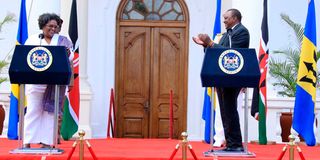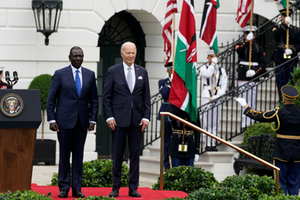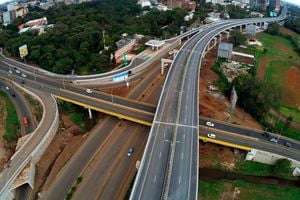Kenya’s active role in Global South agenda paying dividends

President Uhuru Kenyatta and Barbados Prime Minister Mia Amor Mottley address the media at State House, Nairobi on December 11, 2019.
What you need to know:
- In 2009, the UN High Level Conference on South-South Cooperation, which was held in Nairobi, adopted the road map for South-South multilateral engagement to date.
- South-South ties have also been integrated into the Third Medium Term Plan 2018-2022 and the Medium Term Expenditure Framework 2019-2022.
The rise of the Global South has been attributed to increased trade and investment, accelerated regional integration and enhanced sharing of knowledge and technology among the nations of Africa, Asia, Latin America and the Caribbean.
South-South trade has risen from $2.6 trillion in 2007 to $4.5 trillion in 2017, or 28 per cent of global trade, according to UNCTAD’s 2018 World Investment Report.
These nations’ share of the world GDP has risen from 15 per cent in 1960 and is expected to hit 60 per cent by 2030.
Kenya has been a key champion of South-South ties. In 2009, the UN High Level Conference on South-South Cooperation, which was held in Nairobi, adopted the road map for South-South multilateral engagement to date.
In 2007, Kenya established the South-South Technical Standing Committee. South-South ties have also been integrated into the Third Medium Term Plan 2018-2022 and the Medium Term Expenditure Framework 2019-2022.
Strengthen trade
That President Uhuru Kenyatta was elected the President-in-Office of the Organisation of African, Caribbean and Pacific States shows Kenya’s diplomacy on Global South issues is bearing fruit.
Kenya virtually hosted the Caribbean Community (CARICOM) forum’s first Heads of State and Government meeting with the African Union in September last year. The country now has an ambassador to CARICOM as it positions itself as the bridge between Africa and the Caribbean Community.
The visit to Kenya by Barbados Prime Minister Mia Amor Mottley saw the two nations partner on training of health professionals and tourism. Another key platform is the African Union’s 21st Century Pan-African agenda, which includes the African Economic Community and the African Continental Free Trade Area (AfCFTA).
Kenya stands to gain from AfCFTA, a large market with an estimated 1.3 billion people and combined GDP of $ 3.5 trillion. The country recently signed bilateral pacts with South Africa to strengthen trade and ease visa restrictions. The opening of a trade mission in the Democratic Republic of the Congo is another example.
Kenya’s well-trained workforce is a key asset and harnessing exchange with other Global South nations should be one of the country’s key economic strategies.
Mr Choto is a legal and policy analyst. [email protected]





